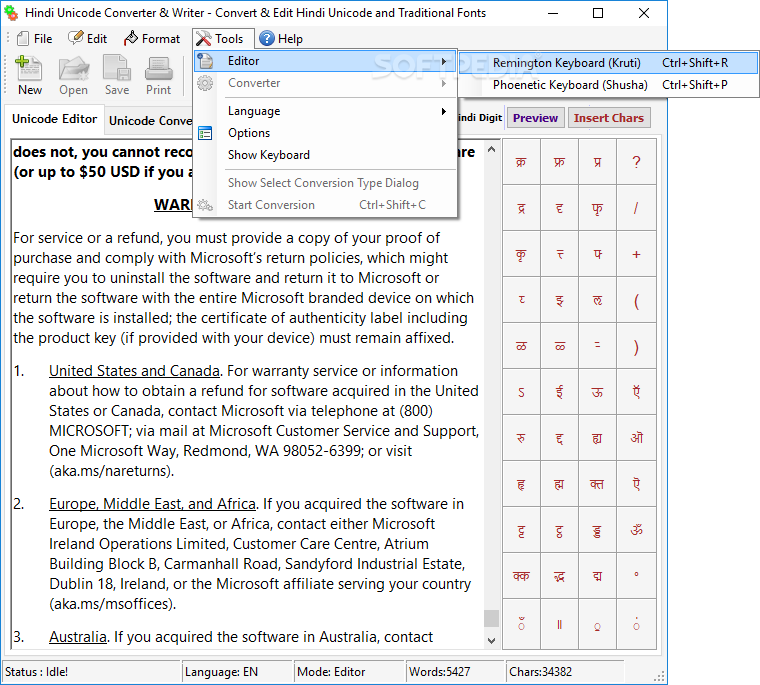- Author: admin
- Category: Category


Comprehensive List of Characters Comprehensive List of Characters Thanks to the advent of This is a form of character set used in newer systems containing well in excess of 40,000 characters. Early Windows systems were limited to 256 characters in any one character set., and to extensive development work by Duxbury Systems, there is a long list of characters supported by DBT. For the sake of this discussion, we divide characters into four groups. • The most common characters needed to produce literary text (generally found on your computer keyboard). • Characters needed to produce text that may not be on your keyboard: accented letters, or non-Roman scripts such as Cyrillic, Arabic, Tamil, or Korean, etc. • Characters needed to produce mathematics or technical material.
• Characters that may be needed for their graphical content. For virtually all users, creating text is not difficult. Using Windows Region and Language Settings (especially the Keyboard Settings), you can have Windows - and especially Microsoft Word - use your preferences for entering text.

The vile lair for pc. It is very easy to enter text, save it as a Microsoft Word file, and then import the completed Word file into Duxbury DBT. What if you do not want to change your keyboard system but need to enter a small number of unusual characters into your text? Manual akpp aw 60 41 sn 2. You can do this in either Microsoft Word or in DBT. When handling technical characters, be aware that you may want to use a mathematics editing program such as to help you.
Duxbury DBT can import files created by MathType. We should mention that while Unicode is used throughout the world, DBT (which predates Unicode!) uses its own internal system for enumerating unusual characters. This system is called DUSCI. If you want to enter a special character into Microsoft Word, you need to know the Unicode number. If you want to enter a special character directly into DBT, you need the DUSCI number. Entering Raw Unicode into Microsoft Word In Word, you can enter a character that is not on your keyboard by typing in the 4-digit ('hexadecimal') code for the character (its Unicode value). Immediately afterward press Alt+X, and Word replaces the 4 digits with the actual Unicode character.
If you repeat the command at the same position, the effect is reversed. So, this command can be used both to learn the Unicode number for a character and to input a Unicode character. Entering Raw DUSCI into Duxbury DBT In DBT, to enter a special character, press Ctrl+] (that is, hold down the Ctrl key and press the right bracket key, ' ]'). In the dialog box which appears, enter the DUSCI 4-digit code. Like Unicode, DUSCI is written in hexadecimal digits.
In Word 2007, I'm trying to get a better understanding of the Unicode System. I looked up a unicode table because the Microsoft Help said I can use the Alt key plus. Original Title: 'I am having problems opening Word documents from just a few months ago. A menu opens asking me to convert to RTF, Unicode, and many other options.
So, if you want to put the Devanagari 'AA' character into your document, its DUSCI code is D+C036. Press Ctrl+] for the dialog box and enter C036. To enter this same character into Microsoft Word, you would use the Unicode number: 0906. Clipboarding Into DBT does not Work for Special Characters You should never cut and paste special characters into DBT because this action loses the benefit of the character conversion done during file import. If you need to clipboard some material, clipboard it into Microsoft Word, and then import the Word file into DBT.
Search
Top News
- Derecho Privado Romano Hernan Valencia Restrepo Pdf Free
- Chakravakam Serial Episode 1000
- Fsx Tornado Torrent With Cracker
- Regulirovka Klapanov Reno Premium
- Loquendo Tts 7 Patch Exe
- Iar Stm8 13 Full Keygen
- Torrent Erase Una Vez El Hombre Serie Completa De La Liga
- Download Stand By Me Doraemon 1080p Sub Indo
- 2005 Arctic Cat F7 Efi Owners Manual